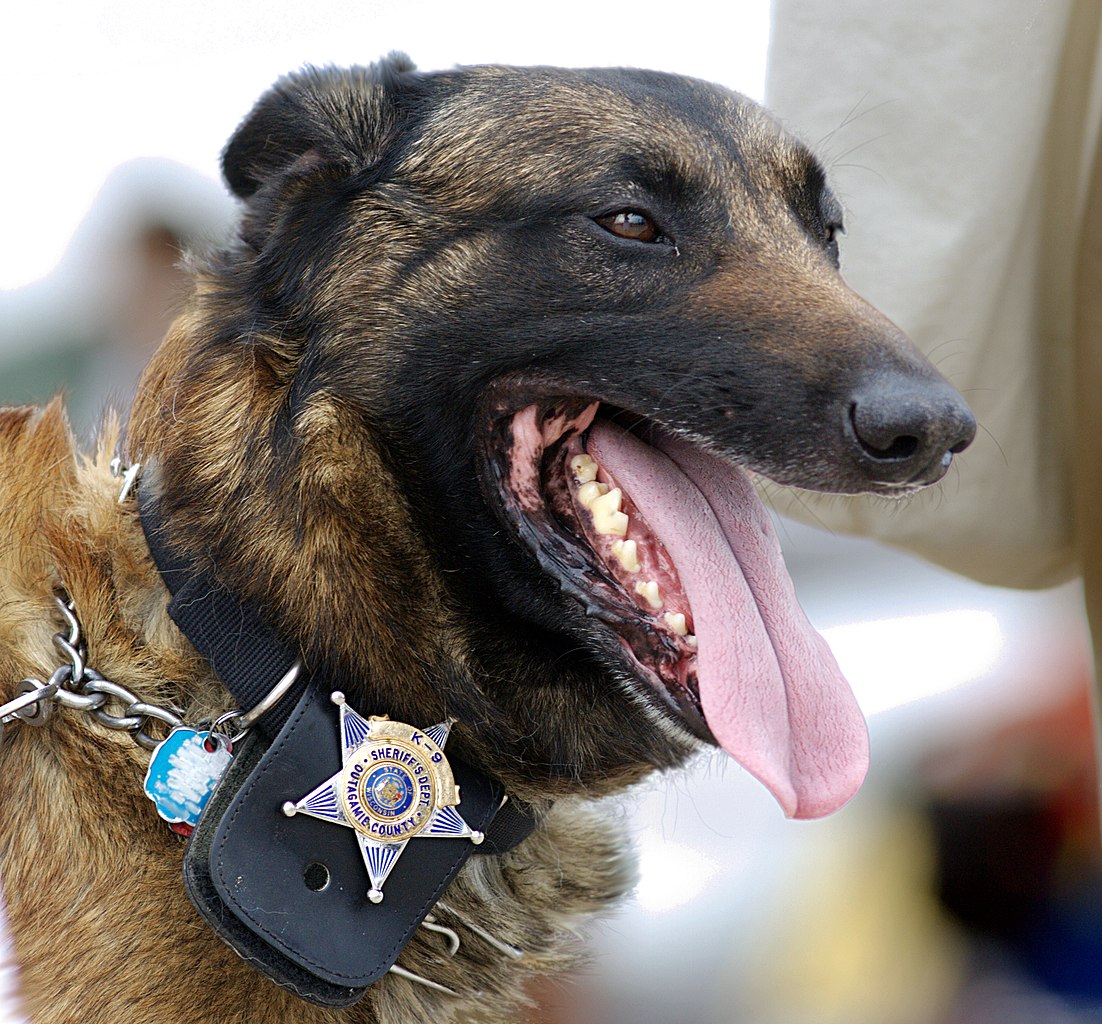MANHATTAN (CN) — Law enforcement’s use of drug-sniffing dogs on individuals now qualifies as a search under the Fourth Amendment, according to a Tuesday ruling from New York’s high court.
It’s been an issue long unresolved by the United States Supreme Court, which has taken an “incremental” approach to the issue for the past four decades, according to Associate Judge Anthony Cannataro.
“Today we take the next logical next step in that progression,” Cannataro wrote in Tuesday’s ruling. “We hold that the use of a narcotics-detection dog to sniff defendant’s body for evidence of a crime qualified as a search and thus implicated the protections of the Fourth Amendment.”
The ruling was in response to a 2017 incident involving two police officers, an alleged heroin purchaser defendant and a drug-sniffing Belgian Malinois named Apache.
According to the decision, the officers pulled over the defendant after believing to witness a drug transaction, and the defendant declined their request for consent to search his car. That’s when the cops brought Apache to the vehicle to sniff-test it for narcotics. But Apache wasn’t interested in the car — he was interested in the defendant.
“The officer then decided to ‘see if there’s any odor on [defendant],’” the ruling said. “He ‘extended the leash a little bit’ so the canine could walk around defendant, at which point the dog… put its nose in defendant’s ‘groin/buttock region,’ and sat, alerting the officer that it had located narcotics.”
The defendant ran, according to the ruling, but was eventually apprehended and arrested. He later moved to suppress evidence of the drugs, claiming that Apache’s sniffs were unlawful under the Fourth Amendment.
But a lower court, and eventually the Appellate Division, sided with the officers, finding that the dog sniffing the defendant was “a minimal intrusion” compared to a full-body search and Apache had already signaled for the scent of narcotics unprompted.
Those courts erred, Cannataro and the court’s six other concurring judges ruled. Apache’s sniff was a full search under the Fourth Amendment, thus requiring probable cause that didn’t exist in this instance.
“It erred in holding that a canine body sniff requires reasonable suspicion and was justified here, issues that were not decided adversely to defendant by the suppression court,” Cannataro wrote. “We accordingly reverse and remit this case to County Court for consideration.”
The state’s high court judges found that, even if a drug-sniffing canine doesn’t make physical contact with a suspect, “the sniffing of the human body involves an obviously greater intrusion on personal privacy, security and dignity.”
“Most people ‘deliberately attempt not to expose the odors emanating from their bodies to public smell’ and experience anxiety and embarrassment at the thought of emitting odors, demonstrating the sensitivity of the matter,” the judges ruled.
It’s a substantial finding, considering the United States Supreme Court remains in limbo on the issue, and Tuesday’s decision appears to be a case of first impression in New York.
The judges continued that a drug dog’s body sniff is certainly intrusive enough to be considered as a search under the Fourth Amendment given the “objectively undignified and disconcerting experience of having an unfamiliar animal place its snout and jaws in close proximity to — if not direct contact with — vulnerable parts of our bodies.”
Some people are also “afraid of dogs,” Cannataro wrote, particularly large police canines.
“Even with pets, it is generally considered rude to allow one’s dog to approach and intensively sniff a stranger without consent,” Cannataro added. “And introducing a trained police dog to explore otherwise undetectable odors in the hopes of discovering incriminating evidence is ‘something else’ entirely; it goes far beyond any implied social license or reasonable expectation.”
Even worse than that, the judges ruled, not recognizing this incident as a Fourth Amendment search would set a dangerous precedent.
“A refusal by this court to recognize what occurred here as a search would sanction law enforcement to roam the streets of this state’s cities and neighborhoods with police dogs arbitrarily sniffing people for evidence of crimes, a picture straight out of a dystopian fiction,” Cannataro wrote.
The judges ordered that the Appellate Division’s order be reversed, and the case sent back to county court for further proceedings in accordance with Tuesday’s ruling.
Subscribe to Closing Arguments
Sign up for new weekly newsletter Closing Arguments to get the latest about ongoing trials, major litigation and hot cases and rulings in courthouses around the U.S. and the world.









